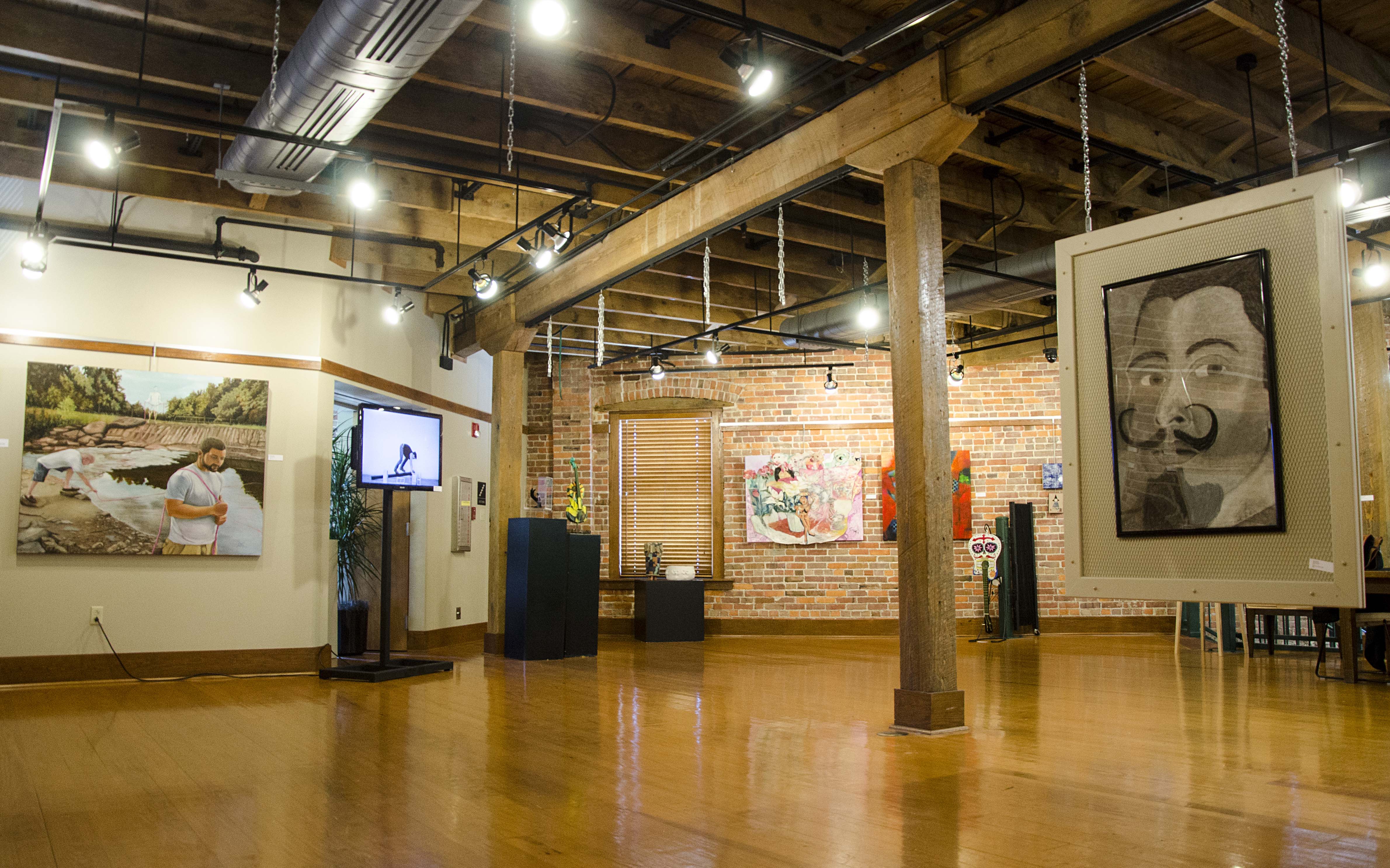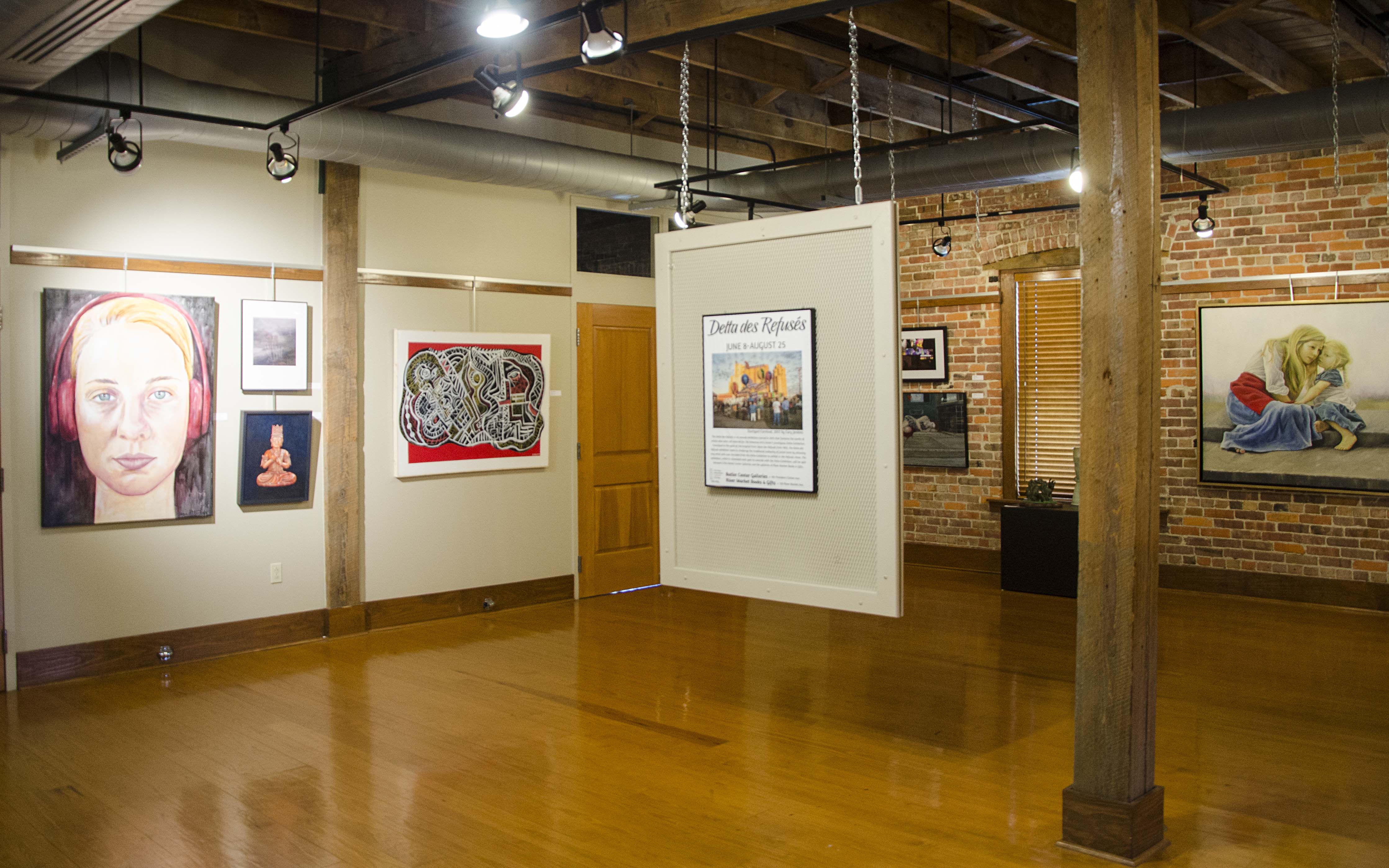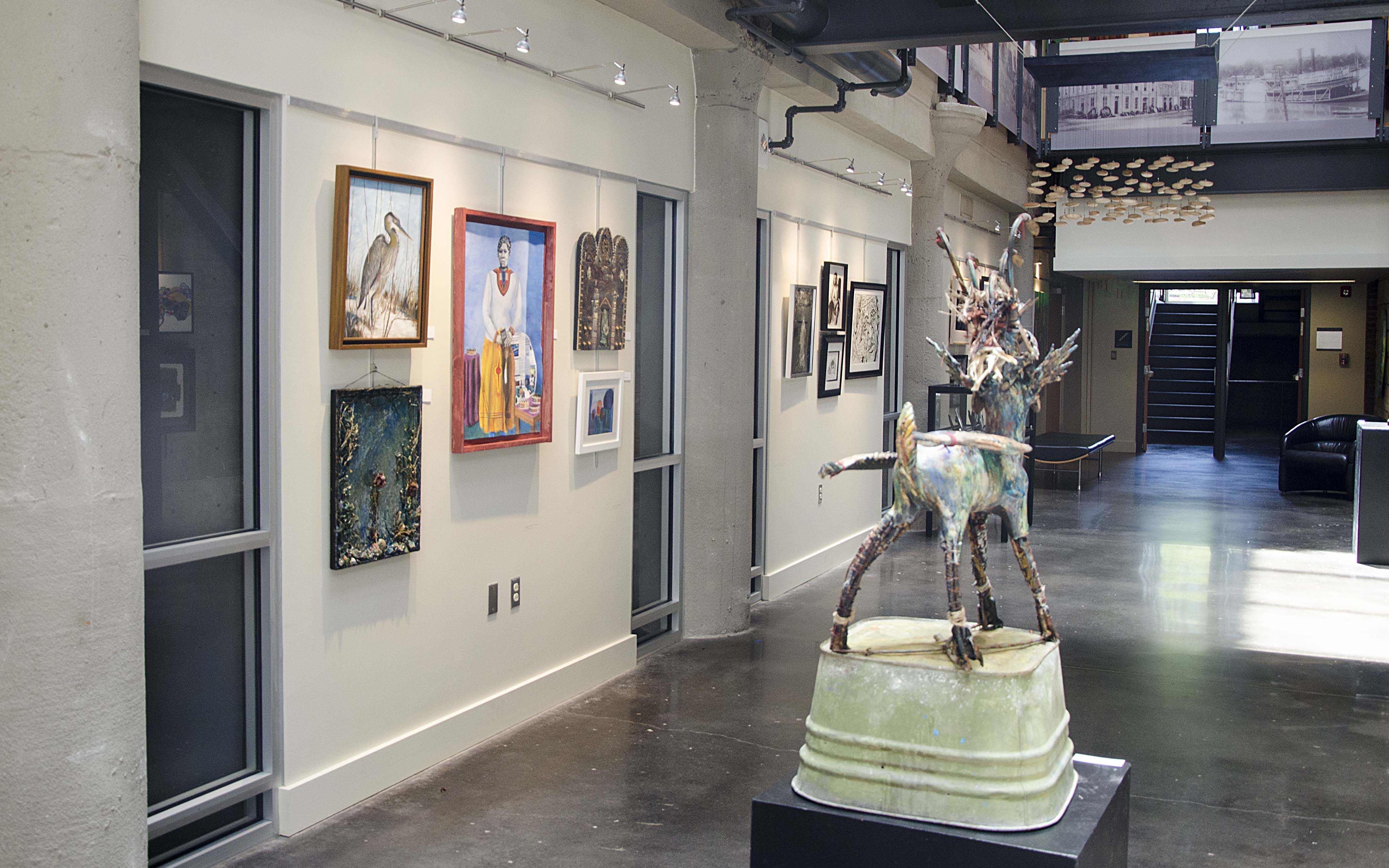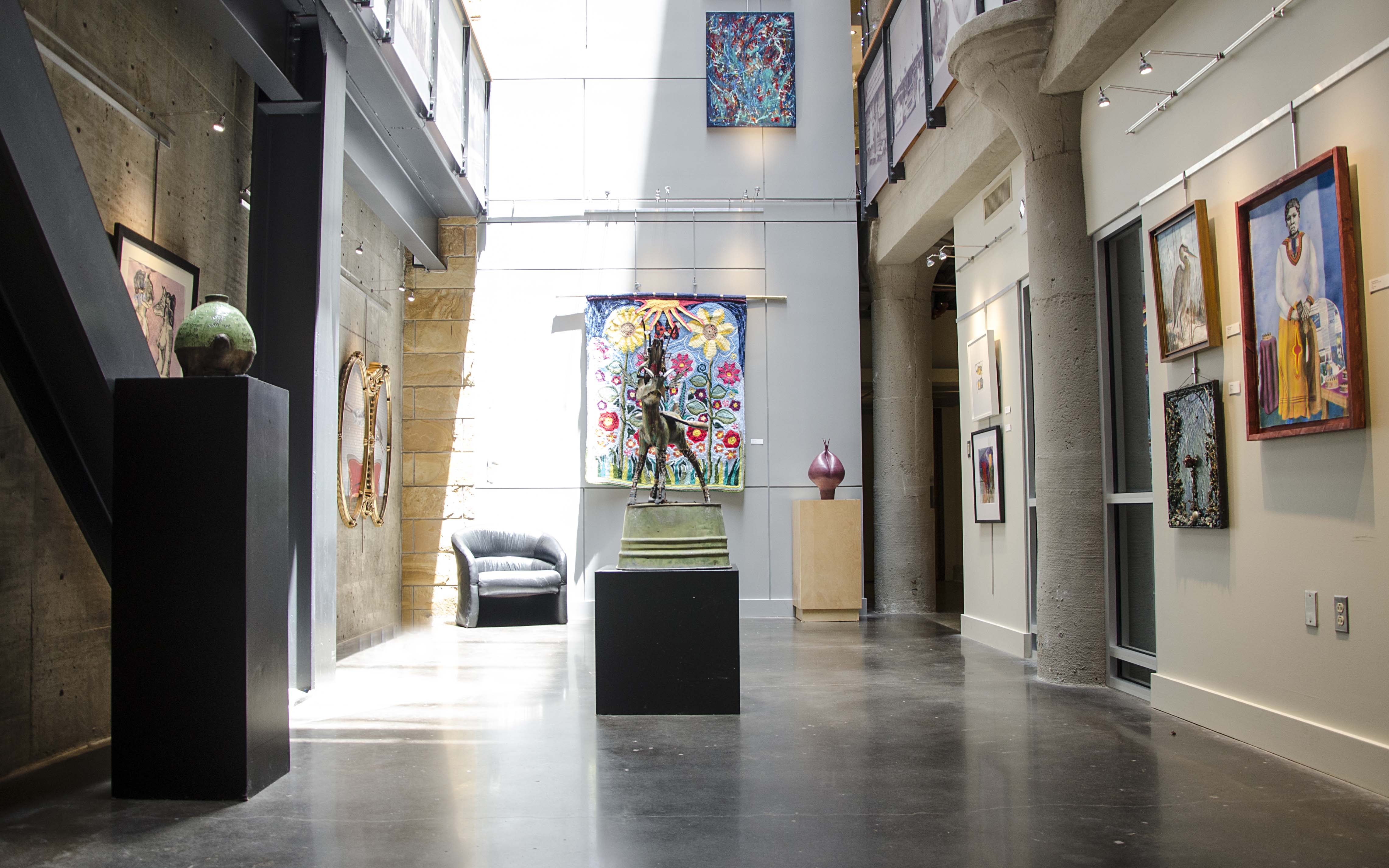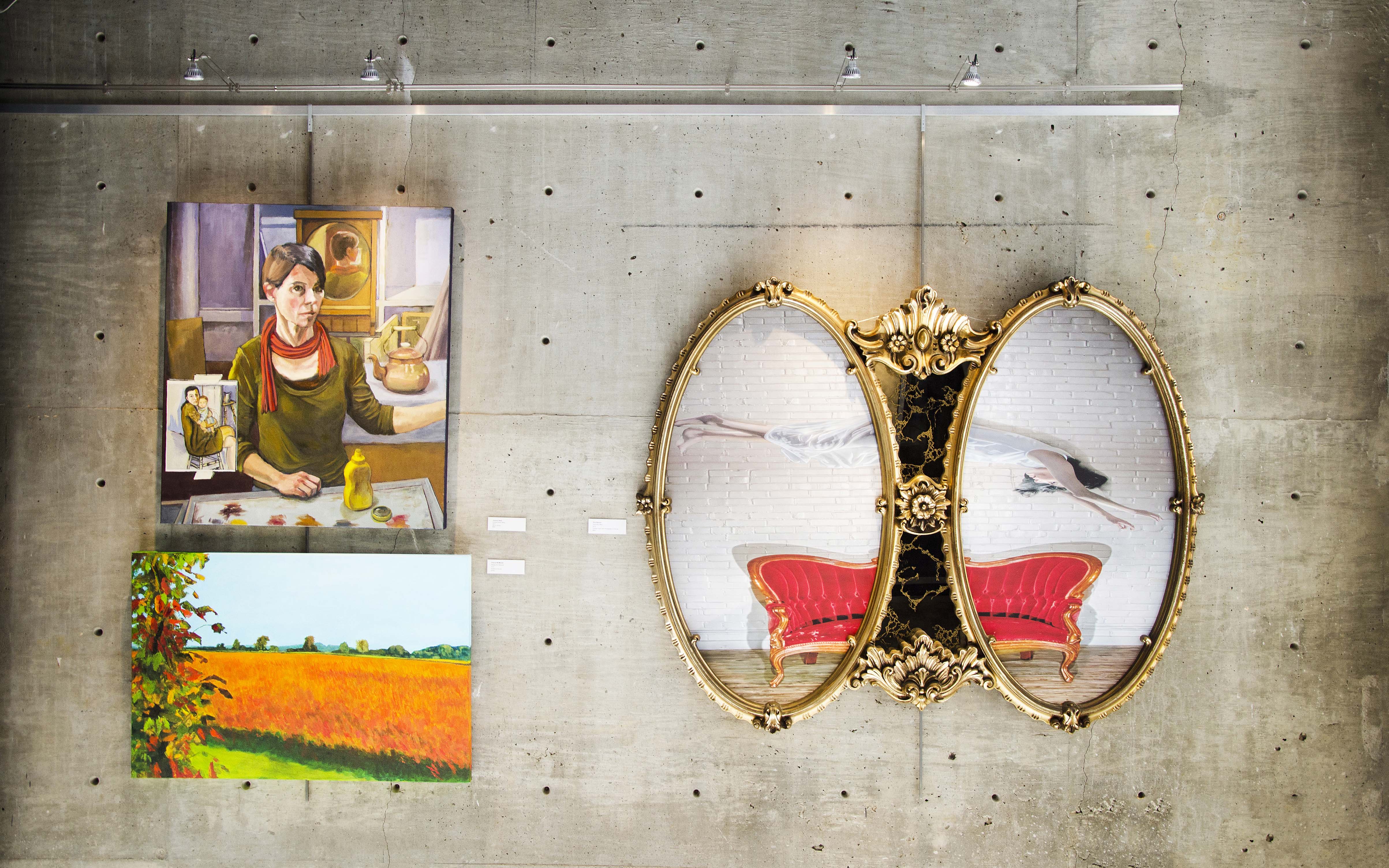A tale of two exhibitions: ART IN THE ROCK
June 25 - July 1, 2018
By Becca Bona
The Arkansas Art Center has played host to the Annual Delta Exhibition for six decades. This juried compilation is viewed as one of the premier exhibitions in Little Rock and beyond.
Longevity is one tribute to the show’s success – perhaps greater, though, is the introduction of the Delta des Refusés, which was officially set in motion in 2015 by local artist, instructor, and curator Rachel Trusty.
Making the case for the Delta des Refusés
To understand the Delta des Refusés, one must first know a little about the Annual Delta Exhibition, as well as have some knowledge of the history of a Refusés show – dating back to the original Salon des Refusés.
The Annual Delta Exhibition was founded in 1958 with a goal of featuring art that is tied to life in the Delta region, which displays contemporary themes, mediums, and expression. Anyone in Arkansas and its bordering states are eligible to enter.
The Delta historically has been a region of strong craftsmanship with a culture all its own. Chosen works are valued on their ingenuity of expression, use of material, and overall style.
Speaking of chosen – the show has always been a juried exhibit versus a curated collection. And, at least in the recent past, the Arkansas Art Center brings in one artist to sort through the enormous pool of entries and pare the show to a reasonable number of pieces.
The juror changes from year to year, which can be frustrating for entering artists. What might work one year is likely not applicable the next.
As one of the most well-known shows in the area, it can be a frustration to enter, year after year and never make the cut.
Trusty knows this all too well, and in 2015, with yet another rejection slip from the Delta in hand, she decided it was time to take action. For inspiration, she looked back to the infamous Salon des Refusés from 1863. The Paris Salon, an annual show backed by the government and Academy of Fine Arts, was known for exhibiting the “best” academic art. More than two-thirds of the submitted paintings were rejected from the 1863 Salon, and there was such an uproar, that the Emperor himself made a call for the public to judge themselves, in a exhibit titled the Salon des Refusés, or “exhibition of rejects.”
And while critics ridiculed the Salon des Refusés, a substantial number of people visited the show, which housed paintings that today are considered famous in their own right. The show became a testament to the emerging avant-garde.
So, when Trusty set out to create the Delta des Refusés, she didn’t let a little thing like lack of experience hold her back.
“The show in 2015 was the first show I ever organized,” she remembered, “It was a large learning curve for me but with the help of my peers and the support of the local art spaces, I feel like at this point that I’ve solved many of the issues or unknowns that I faced in the beginning.”
Of course, with anything new on the scene, there was a sense of skepticism both from artists and patrons alike when the show first opened.
“I think that some artists worried about participating and worried about the quality of the work that would be in the show. The first show was quite a mix of work, but the public came out and it got a great response. I think people enjoyed the work and the event experience,” she said.
The show has continued since then – only taking a year off in 2017 when Trusty was unable to work with a last-minute venue cancellation. In 2016, the Delta Exhibition chose a juror from New York with a specific taste. The result was a monochromatic, and a smaller-than-usual Delta Exhibition, which ultimately meant some of Arkansas’ most loved artists were not included.
“It was a really good moment for the Refusés as many of those artists, who felt comfortable with the exhibit from the year before, decided to enter. The 2016 show had very high quality work. The Thea Foundation did an amazing job at advertising the show and the opening was very well attended. I think these things solidified the show as a legitimate show,” she explained.
The show continues to grow, with participation at 50 for the inaugural 2015 show, 80 for the 2016 show, and just over 100 for this year. Trusty, in the spirit of keeping the show fair and open, is already considering the affect growth might have on securing a venue.
“Going forward the show will either have to be housed in multiple places or be limited to showing the work of the first 100 entrants. It is very important to me to never jury the show – that would be antithetical to its spirit. I feel that if I do have to limit it, that doing it by a first-enter, first-participate system would be fair.”
As long as the Art Center puts on the Delta, there will be a Refusés show. After all, the Delta des Refusés would not exist without the Delta Exhibition.
“The Delta des Refusés is a fun alternative to the Delta. At this point, the two shows have a very interconnected relationship. In some ways, the Refusés has supported the idea that the Delta is a significant show in our region. Now some artists enter the Delta with the purpose of getting into the Refusés exhibition. It is a very interesting dynamic,” said Trusty. “I encourage all visitors to go to both exhibitions and have a dialog about art, juried exhibitions, and taste. So much is subjective in the art world and I hope the Refusés gives a platform to artists and work that may not normally be seen and also that it creates dialog between artists and institutions about taste and the purpose and power of a juror or jury.”
Word on the street: From the artists’ mouth
This year, a few local artists weigh in on what it means to be in the Delta des Refusés, and how they see it affecting the scene, their work, and central Arkansas-large.
Adrian Quintanar has been working full-time as an artist for a little over two years. Quintanar holds a fine arts degree in photography, but chooses ceramics as his medium of choice. “I find happiness in creating objects that bring joy to daily rituals like morning coffee,” he said of his work. “It’s extremely satisfying.”
As a second-year participant in the Delta des Refusés, he said, “I feel the excitement has only grown and that the work quality has greatly improved.”
He added, “The art scene in central Arkansas is full of potential and opportunities for young artists like myself. In the field of ceramics, I have met so many wonderful and talented artists. They have been great mentors and catalysts to the beginning of my art career.”
Julia Napolitano has been into art for some time, but only recently delved into furniture buildilng. “Building furniture from wood is a very calculated act. I think that’s what I like about it. You make a plan [and] then take action. Measure. Cut. Mess up. Freak out. Problem solve. Repeat. I also find joy in functional objects transcending their intended purpose and becoming an object of beauty and interest,” she explained.
As a first-timer to the show, she has been pleasantly surprised, saying, “I’m impressed with all the talent in here, and [a]lso a bit shocked some of these pieces didn’t make it into the Delta.”
And although she is glad to be a part of the Refusés, she has her reservations about the scene as a whole, especially toward furniture makers, who are not always treated like 'artists.'
“I feel the art scene in central Arkansas is somewhat biased. It’s hard for new artists to find places/galleries to show their work because a lot of the time your exposure and popular acceptance is a “who you know” kind of thing.”
Jaquita Ball, an artist based in Bentonville, Ark., started out at KARK-TV as the courtroom sketch artist, newsroom artist, and newswriter in 1976. Ball has a hard time pinning down a preferred medium, but says that she gravitates toward open acrylic, encaustic, and pastels.
A past-participant in the show, Ball said, “Generally, I am not an artist who enters competitions, but the opportunity to exhibit alongside recognized competition artists intrigued me, so I took the plunge in 2016. Rachel Trusty curates a professional exhibition, from submission to exhibition to marketing. Each time, the show gets larger, providing an opportunity for established and emerging artists to exhibit together in a professional setting, not to mention a great networking opportunity.”
This year, Ball took the show as means to experiment, getting outside of her usual realm of color. Originally from central Arkansas, Ball has many thoughts on the scene.
“I have always felt that central Arkansas had a healthy art scene. And over the years, it has improved even more.”
Weigh in on the conversation and visit the Delta des Refusés in downtown Little Rock before Aug 25. For more information visit https://www.deltadesrefuses.com/.
PHOTO CAPTION:
The Arkansas Art Center plays host to the Delta Exhibition each year. In its 60th installment, the juried show has garnered prestige not only in Arkansas but in the surrounding region, as well. Three years ago, in the spirit of the Salon des Refusés of 1863, local artist Rachel Trusty opened the doors to the inaugural Delta des Refusés show. In conjunction with the Delta Exhibition, the Delta des Refusés opens up a larger conversation about the subjectivity of art. (Photos by Becca Bona)




